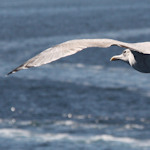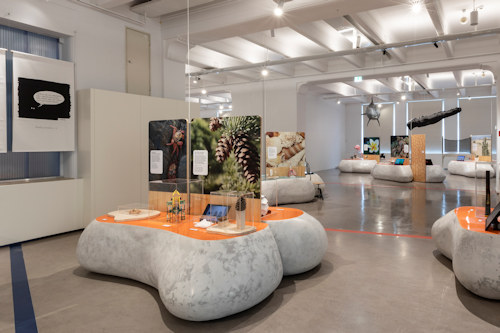
What do cats, kingfishers, pangolins and thigh bones have in common? They’ve all inspired developments in design and engineering. Discover these and other intriguing stories in the BioInspiration exhibition at the Technisches Museum.
- Explores how nature guides technological innovation
- Full of intriguing examples from numerous fields
- All texts in English and German
- Runs from Oct 26, 2022 to Sept 3, 2023
- See also:
Innovation inspired by nature

(Exhibition view; press photo © Technisches Museum Wien)
Over the long course of evolution, plants and animals have found ways to master numerous challenges…the same challenges often faced in design, engineering, architecture, and other disciplines.
Cushioned landing required? Look to the cat.
Improved ventilation systems? Ask a termite.
Better suction cups? Talk to the octopus.
Why reinvent the wheel when nature has done it for us?
As Leonardo da Vinci once noted:
Though human ingenuity may make various inventions…it will never devise any inventions more beautiful, nor more simple, nor more to the purpose than Nature does
We even have terms for research and development that draws on nature: biomimicry, biomimetics, and biologically-inspired technology, for example.
Not that learning from nature is an entirely new approach. When Mark Anthony invaded Parthia in 36BC, for example, the Roman troops used the shield wall we know (for good reason) as the tortoise formation.
The Technisches Museum’s new BioInspiration exhibition highlights the practice and potential of biomimicry with the help of a series of standalone installations featuring one or more examples.

(The soft landing of a cat inspired suspension systems in spaceships; press photo © Technisches Museum Wien)
The displays cover a huge variety of developments from the past, present and future, drawing together theory and practical applications.
These begin with the biomimetic classic that we now know as velcro (inspired by burdock plants). Other topics include transport, materials, architecture and design, the environment, medicine, sport, and space research.
Since nature has no place for waste, biomimetics can often help avoid inefficiency and build sustainable and adaptable solutions, depending on the implementation (a strong theme in BioInspiration).
The variety and innovation on display certainly surprises, delights, and intrigues in equal measure.
The kingfisher’s beak as role model for high-speed trains? Barn owl wings as a template for low-noise fans? Mussel secretions as inspiration for adhesives?
You cannot help but come away impressed. Not just by the potential of biomimetics (a sliver of hope in troubled times) but also by the anecdotes.
Having ridden London’s rail network, it came as quite a surprise to discover Marc Isambard Brunel’s techniques used to dig a tunnel below the Thames in the early 1800s were inspired by Teredo molluscs (known commonly as shipworms).
(The exhibition was conceived by Granada’s Parque de las Ciencias and is part of a three-way museum cooperation with DASA Dortmund that sees BioInspiration move to Germany later in 2023. The Technisches Museum’s own Foodprints exhibition is currently in Dortmund before passing on to Granada. Sustainability in action!)
Dates, tickets and tips
Let yourself be inspired by the ingenuity of nature from October 26th, 2022 through to September 3rd, 2023. An entrance ticket for the museum includes the special exhibition.
The Technisches Museum takes care of all the science and technology side of things. But if you want to explore nature in more depth, then Vienna has a couple of grand alternatives for you:
- Tiergarten Schönbrunn: Vienna’s acclaimed zoo on the grounds of the Schönbrunn Palace complex is not far from the museum (so you can combine a trip: the old and the new so to speak)
- Haus des Meeres: a huge aquarium and vivarium located in an old flak tower. Also notable for the rooftop restaurant with views across Vienna
How to get there
Follow the travel tips in the main Technisches Museum article.
Address: Mariahilfer Straße 212, 1140 Vienna